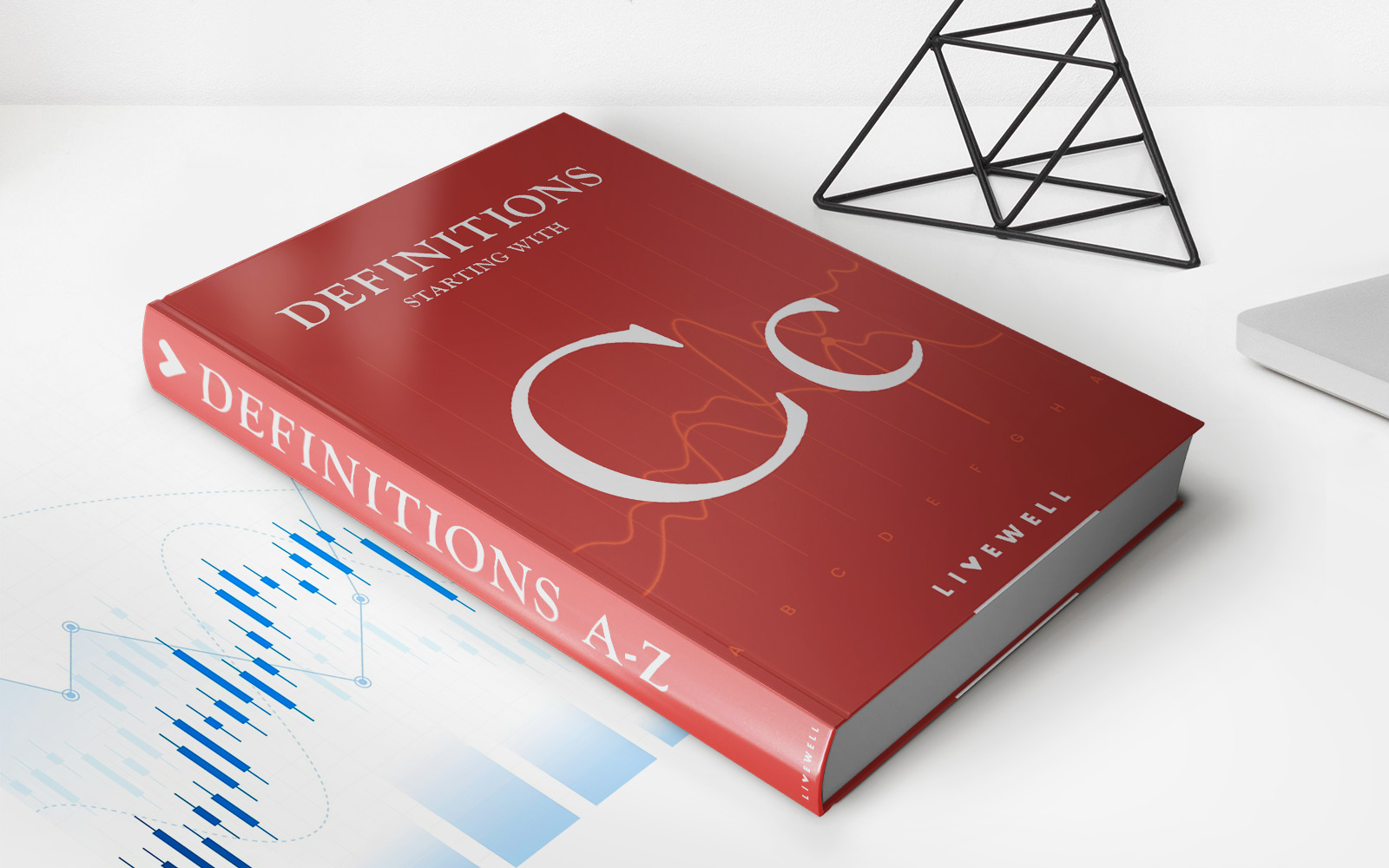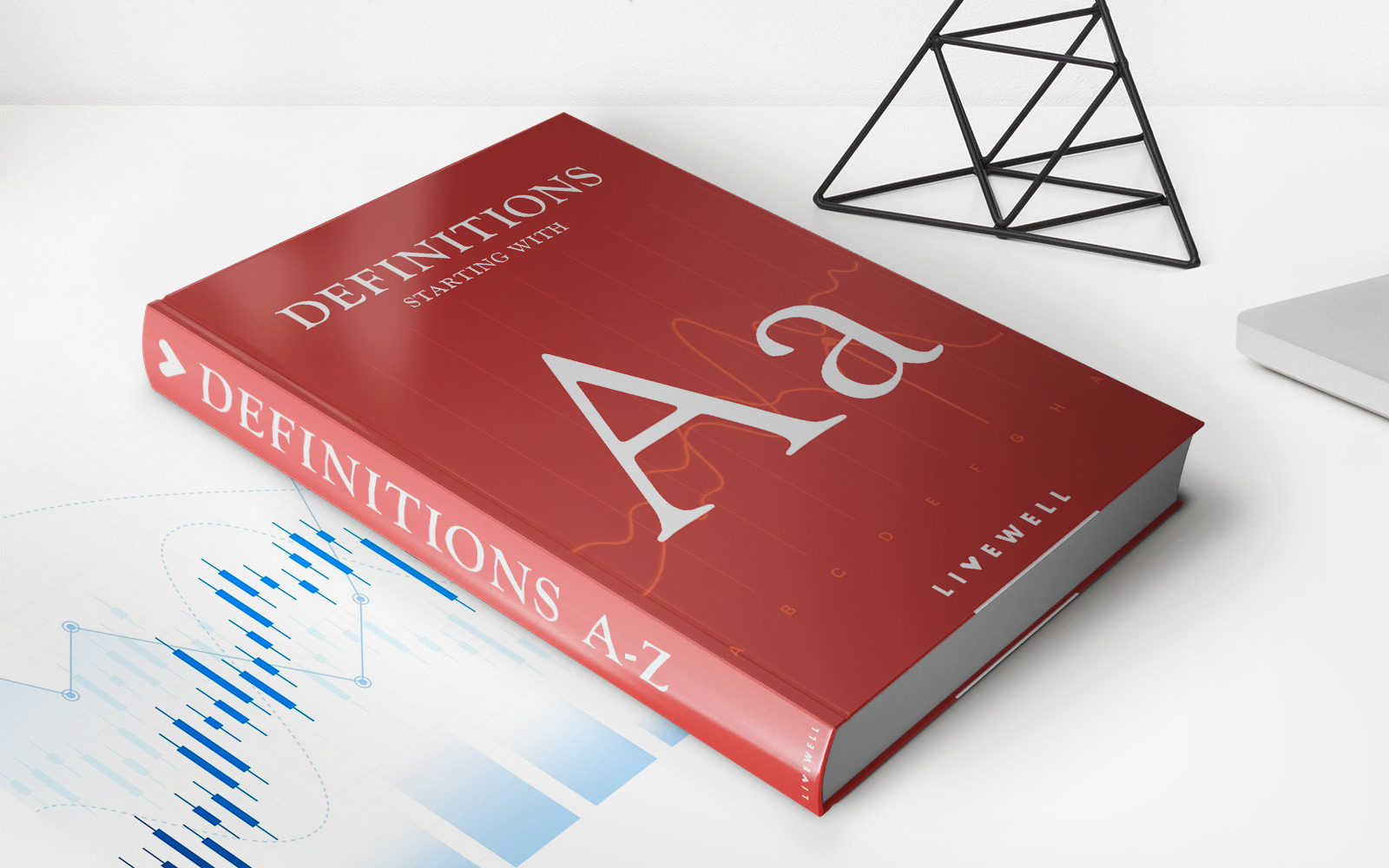

Finance
Why Have A 401K
Published: October 15, 2023
Learn why having a 401K is essential for your financial future. Discover the benefits of managing your money wisely and securing your retirement
(Many of the links in this article redirect to a specific reviewed product. Your purchase of these products through affiliate links helps to generate commission for LiveWell, at no extra cost. Learn more)
Table of Contents
Introduction
Welcome to the world of finance and retirement planning! If you’re just starting out in your career or looking to secure your financial future, having a 401(k) can be a game-changer. In this article, we’ll explore the benefits of having a 401(k) and why it’s an essential tool for anyone looking to retire comfortably.
A 401(k) is a retirement savings plan offered by employers to their employees. It allows individuals to contribute a portion of their salary to a retirement account, which is then invested in a variety of financial assets such as stocks, bonds, and mutual funds. The funds in the account grow tax-deferred until the time of withdrawal, typically during retirement.
Having a 401(k) offers numerous advantages that can significantly impact your financial future. First and foremost, it provides a convenient and disciplined way to save for retirement. With automatic payroll deductions, you don’t have to remember to set aside money each month – it’s done for you. This not only simplifies the process but also ensures regular contributions, allowing your savings to grow over time.
One of the main attractions of a 401(k) is the tax benefits it offers. The contributions you make to your 401(k) are generally tax-deductible, meaning they reduce your taxable income for the year. This reduces your overall tax liability and can potentially put more money back into your pocket. Additionally, the investment gains within the account are not taxed until you withdraw them, allowing them to compound and grow more rapidly.
Employer matches and contributions are another compelling reason to have a 401(k). Many employers offer a matching contribution to employees who participate in the plan. For example, your employer may match a certain percentage of your contributions, effectively doubling your retirement savings. This is essentially free money that can significantly boost your nest egg.
What is a 401(k)?
A 401(k) is a type of retirement savings plan that is offered by employers to their employees. It gets its name from the section 401(k) of the Internal Revenue Code, which governs these types of plans. It’s a valuable tool for individuals to save and invest for their retirement years.
Under a 401(k) plan, employees can contribute a portion of their pre-tax income to their retirement account. The contributions are deducted directly from their paychecks before taxes are applied. This means that the money you contribute to your 401(k) is not subject to federal income taxes until you withdraw it during retirement.
One of the primary advantages of a 401(k) is the ability to invest your contributions in a variety of financial instruments. These can include stocks, bonds, mutual funds, and even company stock. Each investment option carries its own level of risk and potential return, allowing you to customize your portfolio based on your risk tolerance and investment goals.
Another crucial feature of a 401(k) is the potential for employer contributions. Many employers provide a matching contribution to incentivize their employees to save for retirement. For example, an employer may match a percentage of the employee’s contribution up to a certain limit, effectively doubling their retirement savings. This employer match is essentially free money that can significantly boost the growth of your 401(k).
It’s important to note that 401(k) plans have contribution limits set by the IRS. As of 2021, the maximum annual contribution that an individual can make to their 401(k) is $19,500. However, if you are age 50 or older, you may be eligible to make catch-up contributions, allowing you to contribute an additional $6,500 per year.
While a 401(k) offers significant tax advantages and the potential for employer contributions, it’s essential to remember that there are restrictions on when and how you can access your funds. Typically, you cannot withdraw money from your 401(k) before the age of 59½ without incurring a penalty. Withdrawing funds before retirement should generally be considered a last resort due to the taxes and penalties involved.
In summary, a 401(k) is a powerful retirement savings vehicle that allows individuals to contribute a portion of their income towards investments for their golden years. With specific tax benefits and the potential for employer contributions, a 401(k) is an excellent way to secure your financial future and enjoy a comfortable retirement.
Advantages of Having a 401(k)
A 401(k) offers several advantages that make it an invaluable tool for retirement planning. Let’s explore some of the key benefits:
- Tax benefits: One of the most significant advantages of a 401(k) is the tax benefits it provides. Contributions made to a traditional 401(k) are tax-deferred, meaning you don’t pay taxes on that money until you withdraw it during retirement. This allows your contributions to grow and compound over time without being diminished by annual taxation.
- Employer contributions: Many employers offer a matching contribution to their employees’ 401(k) plans. Essentially, this means that your employer will contribute a certain percentage of your salary to your retirement account based on the amount you contribute. This is essentially free money, and it can significantly boost your retirement savings.
- Automatic savings: With a 401(k), your contributions are deducted directly from your paycheck, making it easier to save consistently. This automation ensures that you’re regularly setting aside money for your future, eliminating the need for manual transfers or discipline to save.
- Investment choices: A 401(k) typically offers a range of investment options, allowing you to select the mix of assets that aligns with your risk tolerance and investment goals. Whether you prefer stocks, bonds, or mutual funds, you have the flexibility to diversify your portfolio and potentially maximize your returns.
- Protection from creditors: In most cases, the funds in your 401(k) account are protected from creditors. This means that in the event of bankruptcy or financial difficulty, your retirement savings are safeguarded. This protection can provide peace of mind, knowing that your hard-earned money is secure.
- Compounding growth: One of the key advantages of starting a 401(k) early is the power of compounding. By consistently contributing to your account over time, your investments have the opportunity to grow exponentially. The earlier you begin, the longer your contributions have to compound, potentially resulting in significant wealth accumulation.
Overall, having a 401(k) offers numerous advantages that can greatly enhance your retirement readiness. The combination of tax benefits, potential employer contributions, automatic savings, and investment choices make it a smart financial decision. Taking advantage of these benefits can put you on the path to a secure and comfortable retirement.
Tax Benefits of a 401(k)
One of the major advantages of having a 401(k) is the significant tax benefits it provides. These tax advantages can help maximize your retirement savings and potentially lower your overall tax liability. Let’s explore some of the key tax benefits of a 401(k) plan:
- Pre-tax contributions: When you contribute to a traditional 401(k) plan, your contributions are made with pre-tax dollars. This means that the amount you contribute is deducted from your taxable income for the year, providing an immediate tax benefit. Your contributions and any investment gains within the account grow tax-deferred until you withdraw them during retirement.
- Tax-free growth: Another significant tax benefit of a 401(k) is that your investments grow tax-free within the account. This allows your contributions and any investment gains to compound over time without being subject to annual taxation. The power of tax-free growth can greatly accelerate the growth of your retirement savings.
- Tax-deferred withdrawals: When you reach retirement age and start withdrawing funds from your 401(k) account, those withdrawals are subject to income tax. However, by the time you retire, you may be in a lower tax bracket than during your working years. This can potentially reduce your tax liability when you withdraw funds from your 401(k).
- Lower taxable income: By contributing to a 401(k), you effectively lower your taxable income for the year. This can result in a lower tax bill and potentially allow you to qualify for other tax deductions and credits. Lowering your taxable income can provide immediate financial benefits and put more money back in your pocket.
- Reduced capital gains taxes: If you invest in stocks, bonds, or mutual funds within your 401(k) and sell them for a profit, you won’t incur capital gains taxes. This is because transactions within a 401(k) are not subject to capital gains tax. This can be especially advantageous for active traders who frequently buy and sell securities, as they can enjoy tax-free gains within their 401(k).
It’s important to note that while contributions to a traditional 401(k) are tax-deductible, withdrawals made during retirement are subject to ordinary income tax. However, this can be managed effectively by planning your withdrawals strategically to minimize your tax liability.
Overall, the tax benefits of a 401(k) can play a crucial role in maximizing your retirement savings. By taking advantage of the pre-tax contributions, tax-free growth, and potentially lower tax brackets during retirement, you can optimize your tax strategy and build a substantial nest egg for your golden years.
Employer Matches and Contributions
One of the key advantages of having a 401(k) is the potential for employer matches and contributions. Many employers offer a matching contribution as a way to incentivize their employees to save for retirement. Let’s explore how these employer matches and contributions can significantly boost your retirement savings:
Matching contributions: Some employers will match a portion of the employee’s 401(k) contributions. For example, an employer may match 50% of your contributions, up to a certain percentage of your salary. This means that for every dollar you contribute to your 401(k), your employer will contribute a certain percentage as well. This match is essentially free money that gets added to your retirement account.
Increased retirement savings: Employer matches and contributions can significantly increase the amount of money you save for retirement. Let’s say you contribute $5,000 to your 401(k) in a year and your employer offers a 50% match. This means your employer will contribute an additional $2,500, bringing your total annual contribution to $7,500. Over time, these additional contributions can make a substantial difference in the growth of your retirement savings.
Tax advantages: Employer matches and contributions are also tax advantaged. Like your own contributions, employer matches are generally made with pre-tax dollars, reducing your taxable income for the year. This can result in immediate tax savings. Additionally, these contributions grow tax-deferred until withdrawal, allowing them to compound and grow more rapidly over time.
Vesting period: It’s important to note that employer contributions, including matching contributions, may be subject to a vesting schedule. A vesting schedule determines the length of time an employee must stay with the company in order to fully own the employer’s contributions. Once you become fully vested, the employer contributions are yours to keep, even if you leave the company.
Maximizing employer contributions: To take full advantage of employer matches and contributions, it’s important to contribute enough to your 401(k) to receive the maximum employer match. Be sure to check your employer’s matching policy and contribute at least the minimum amount required to receive the full match. Failing to do so means leaving money on the table and missing out on potential additional retirement savings.
Portability: Another advantage of employer matches and contributions in a 401(k) is their portability. If you change jobs, you can typically roll over your 401(k) balance, including the employer contributions, into a new employer’s retirement plan or an individual retirement account (IRA). This allows your retirement savings to continue growing and keeps you on track for a comfortable retirement, regardless of your career moves.
Overall, employer matches and contributions can significantly enhance your retirement savings. By taking advantage of these benefits, you can increase the amount of money you save, enjoy immediate tax advantages, and benefit from the long-term growth potential of these additional contributions. Make sure to explore the matching policy with your employer and maximize their contributions to help secure your financial future.
Retirement Savings and Planning
Planning for retirement is a crucial aspect of financial well-being, and having a 401(k) can be instrumental in achieving your retirement goals. Let’s explore the importance of retirement savings and the role a 401(k) plays in your overall retirement planning:
Building a nest egg: Retirement savings is all about building a nest egg to support your lifestyle when you are no longer working. By contributing to your 401(k), you are systematically setting aside money each month, allowing your savings to compound and grow over time. The sooner you start saving for retirement, the more time your money has to grow, potentially resulting in a more substantial nest egg.
Financial security during retirement: Retirement savings provide you with the financial security to maintain your lifestyle during your golden years. By diligently contributing to your 401(k) over the course of your career and making sound investment decisions, you can ensure that you have the funds necessary to cover your living expenses, healthcare costs, and leisure activities in retirement.
Diversification of income sources: Dependence on a single source of income, such as Social Security, may not be sufficient during retirement. A well-funded 401(k) can provide an additional stream of income to supplement other retirement savings and Social Security benefits. Diversifying your income sources can help you weather any changes in economic conditions and ensure a more comfortable retirement.
Retirement planning: Having a 401(k) is a crucial component of a comprehensive retirement plan. It allows you to map out your financial goals and determine how much you need to save to reach those goals. Retirement planning involves assessing your current financial situation, estimating future expenses, projecting investment growth, and determining the desired retirement age. Creating a retirement plan helps you stay on track, make necessary adjustments along the way, and ensures that you are prepared for a financially secure retirement.
Long-term investment growth: A 401(k) provides a platform for long-term investment growth. By allocating your contributions to a diversified portfolio of assets, you can take advantage of the potential for higher returns over a longer time horizon. The power of compounding and the ability to weather short-term market fluctuations can contribute significantly to your retirement savings growth over the years.
Planning for unforeseen circumstances: Retirement planning isn’t just about accumulating wealth; it’s also about preparing for unforeseen circumstances. Life can throw unexpected challenges, such as medical emergencies or job loss, that can impact your retirement savings. A 401(k) can offer a safety net, allowing you to take hardship withdrawals or loans in certain situations to weather these challenges without severe financial consequences.
Regular monitoring and adjustments: Proper retirement planning involves regularly monitoring and adjusting your investment strategy. As you get closer to retirement, it may be necessary to rebalance your portfolio, shifting towards a more conservative approach to protect your accumulated wealth. Regular check-ins with your financial advisor or reviewing your 401(k) plan can help ensure that you stay on track and make necessary adjustments to align with your retirement goals.
Remember, the key to successful retirement savings and planning is to start early, contribute consistently, diversify your investments, and regularly review your progress. By making the most of your 401(k) and implementing a comprehensive retirement plan, you can work towards a financially secure and fulfilling retirement.
Investment Options within a 401(k)
When it comes to a 401(k) plan, one of the significant advantages is the wide range of investment options available. These options allow you to tailor your investments to align with your risk tolerance and financial goals. Let’s explore the various investment options typically offered within a 401(k):
Stocks: Many 401(k) plans offer a selection of individual company stocks or stock funds. Investing in stocks provides the potential for high returns over the long term but also comes with higher volatility and risk compared to other investment options. Stock investments can be a valuable component of a well-diversified portfolio within a 401(k).
Bonds: Bonds are considered safer investments compared to stocks. They offer more stability and generate income in the form of interest payments. Bond options within a 401(k) may include government bonds, corporate bonds, or bond funds. Including bonds in your 401(k) can help balance out the risk of your overall portfolio.
Mutual Funds: Mutual funds are a popular investment option within a 401(k) as they provide diversification across a broad range of assets. These funds pool money from multiple investors to invest in a variety of securities. Depending on your risk tolerance and investment goals, you can choose from equity funds, bond funds, index funds, or target-date funds.
Target-Date Funds: Target-date funds are a type of mutual fund that automatically adjusts the asset allocation over time based on your expected retirement date. As you approach retirement, the fund gradually shifts towards more conservative investments. Target-date funds provide a “set-it-and-forget-it” approach for individuals who prefer a hands-off investment strategy.
Exchange-Traded Funds (ETFs): Similar to mutual funds, ETFs offer diversification across a range of assets. However, unlike mutual funds, ETFs trade on an exchange like individual stocks. ETFs within a 401(k) provide flexibility and the ability to invest in specific sectors or market indexes.
Stable Value Funds: Stable value funds are cash-like investment options within a 401(k) that aim to provide a guaranteed return over a specific period. These funds are designed to preserve capital and typically invest in fixed-income securities. Stable value funds are a low-risk option for investors looking for capital preservation and income generation.
Company Stock: Some employers offer their company’s stock as an investment option within the 401(k) plan. Investing in company stock allows you to share in the success of the company you work for. However, it’s essential to carefully assess the risk and maintain diversification to avoid overexposure to a single investment.
Managed Accounts: Managed accounts, also known as professionally managed portfolios, provide a personalized investment strategy tailored to your risk tolerance and retirement goals. Professional investment managers handle asset allocation, portfolio rebalancing, and investment selection on your behalf. Managed accounts can be an attractive option for individuals who prefer professional guidance with their 401(k) investments.
When considering investment options within your 401(k), it’s important to assess your risk tolerance, investment time horizon, and financial goals. Diversifying your investments across various asset classes can help spread risk and potentially enhance your returns. Consulting with a financial advisor can provide valuable insights and guidance in selecting the most appropriate investment options within your 401(k) plan.
Flexibility and Portability of a 401(k)
A 401(k) offers flexibility and portability, making it a versatile retirement savings tool. Let’s explore the key aspects of flexibility and portability within a 401(k) plan:
Flexibility of Contributions: One of the major benefits of a 401(k) is the flexibility it offers in terms of contribution amounts. Most plans allow you to adjust your contribution level at any time, within the limits set by the Internal Revenue Service (IRS). You can increase or decrease your contributions based on changes in your financial situation or personal goals. This flexibility allows you to adapt your savings strategy as needed throughout your career.
Choice of Investment Options: 401(k) plans typically offer a range of investment options, as discussed in the previous section. This flexibility allows you to customize your investment portfolio based on your risk tolerance and investment preferences. Whether you prefer stocks, bonds, mutual funds, or target-date funds, you can select the investments that align with your financial goals and risk appetite.
Loan and Hardship Withdrawal Options: In certain circumstances, a 401(k) allows for loans and hardship withdrawals. If you experience a financial hardship, such as medical expenses or preventing foreclosure on your primary residence, you may be eligible to take a hardship withdrawal from your 401(k) account. Additionally, some plans permit participants to take out a loan from their 401(k), which can be repaid over time, with interest. While these options should be used cautiously and as a last resort, they provide additional flexibility in times of need.
Rollover options: When changing jobs or transitioning to retirement, you have the option to roll over your 401(k) balance into an individual retirement account (IRA) or a new employer’s retirement plan. Rolling over your funds offers portability, allowing your retirement savings to continue growing without tax consequences or penalties. This flexibility not only provides continuity in saving for retirement but also enables greater control over your investments and potential access to a wider range of investment options.
Portability of Employer Contributions: In addition to the portability of your own contributions, employer contributions within a 401(k) can also be portable. When you change jobs, the employer contributions that have vested are typically transferred along with your own contributions to the new retirement account. This ensures that you don’t lose the valuable contributions made by your previous employer and allows for seamless continuation of your retirement savings efforts.
Consolidation of Retirement Accounts: If you have multiple retirement accounts from previous employers, a 401(k) provides an opportunity for consolidation. By rolling over old 401(k) balances into your current 401(k) account, you can streamline your retirement savings and have a clear view of your overall portfolio. Consolidation simplifies the management of your retirement funds and potentially reduces administrative fees associated with multiple accounts.
Overall, the flexibility and portability of a 401(k) make it a versatile tool for long-term retirement planning. The ability to adjust contributions, customize investment options, take loans or withdrawals when necessary, and roll over funds contribute to a tailored and adaptable retirement strategy. Maximizing these flexible features can help you optimize your retirement savings and financial well-being.
How to Enroll in a 401(k) Plan
Enrolling in a 401(k) plan is a straightforward process that sets you on the path to building a secure retirement. Here are the steps to enroll in a 401(k) plan:
- Educate yourself: Start by familiarizing yourself with the basics of a 401(k) plan. Understand how it works, the benefits it offers, and the investment options available. Research your employer’s specific plan details, such as matching contributions and any eligibility requirements, to ensure you are well-informed.
- Review plan documents: Obtain the plan documents and read them thoroughly. These documents provide essential information about the plan, including contribution limits, investment options, vesting schedules, and any fees associated with the plan. Understanding the details of the plan will help you make informed decisions.
- Determine eligibility: Check if you are eligible to participate in your employer’s 401(k) plan. Generally, eligibility is based on factors such as your employment status, length of service, and age. If you are eligible, proceed to the next step.
- Decide on your contribution amount: Determine how much you want to contribute to your 401(k) plan. The IRS sets annual contribution limits, so ensure you adhere to these limits to maximize your tax advantages. Consider contributing enough to take full advantage of any employer matching contributions, as this is essentially free money.
- Complete the enrollment forms: Obtain the necessary enrollment forms from your employer’s human resources department or through their online portal. Fill out the required information, including your personal details, contribution amount, and investment choices. If you need assistance, don’t hesitate to reach out to your HR representative for guidance.
- Select your investment options: Review the available investment options within the plan. Consider your risk tolerance, time horizon, and financial goals when making your investment selections. Diversifying your investments across different asset classes can help mitigate risk.
- Submit and set up contributions: Once you have completed the necessary forms, submit them to your employer or upload them online. Work with your employer to set up your payroll deductions for your 401(k) contributions. Review your paycheck after the first deduction to confirm that the contribution is being made correctly.
- Monitor and reassess: Regularly monitor your 401(k) contributions and investment performance. Review your investment choices periodically and make adjustments as needed. Consider increasing your contributions over time, especially as you receive raises or bonuses, to further boost your retirement savings.
Remember, enrolling in a 401(k) plan is an important step towards securing your financial future. Take the time to understand the plan, make informed decisions about your contributions and investments, and periodically review and reassess your retirement savings strategy. Over time, your diligent efforts will yield a substantial nest egg for a comfortable retirement.
Pitfalls to Avoid with a 401(k)
While a 401(k) is an excellent tool for retirement savings, it’s important to be aware of potential pitfalls that can hinder your long-term financial goals. By avoiding these common mistakes, you can make the most of your 401(k) and maximize your retirement savings. Here are some pitfalls to watch out for:
- Not taking full advantage of employer matches: One of the biggest mistakes is failing to contribute enough to your 401(k) to receive the full employer match. Employer matches are essentially free money and can significantly boost your retirement savings. Contribute at least enough to meet the match requirement to take full advantage of this benefit.
- Too much or too little risk: Misjudging your risk tolerance can be detrimental. If you are too risk-averse, you may miss out on potential growth opportunities. On the other hand, taking on excessive risk may expose your savings to market volatility. Strive for a well-balanced investment portfolio that aligns with your risk appetite and long-term goals.
- Ignoring investment fees: Be mindful of the fees associated with your 401(k) investments. High fees can eat into your returns over time. Review the expense ratios of the mutual funds or ETFs within your plan and consider low-cost options to minimize fees and maximize your investment growth.
- Not diversifying your investments: Failing to diversify your investment portfolio can be a significant pitfall. Overconcentration in a single asset class or company leaves your savings vulnerable to specific market risks. Spread your investments across different asset classes and consider a mix of stocks, bonds, and other investment options to mitigate risk.
- Ignoring the power of compounding: Starting early and contributing consistently has a compounding effect on your 401(k) savings. Even small contributions can grow significantly over time. Don’t underestimate the impact of compounding, and start saving for retirement as soon as possible.
- Taking early withdrawals: Withdrawing funds from your 401(k) before retirement should generally be avoided. Early withdrawals are subject to taxes and penalties, which erode your savings and hinder your long-term growth potential. Avoid tapping into your 401(k) unless it’s a true financial emergency.
- Not reviewing and adjusting your investments: Failing to regularly review your investment choices and make necessary adjustments can hinder your returns. Keep track of your portfolio performance and periodically reassess your investment options. As you near retirement, consider shifting towards more conservative investments to protect your accumulated savings.
By avoiding these pitfalls and staying proactive in managing your 401(k), you can optimize your retirement savings potential. Stay informed, regularly assess your contributions and investments, and make adjustments when necessary. With a disciplined and careful approach, your 401(k) can become a powerful tool in building a secure financial future.
Conclusion
In conclusion, a 401(k) is a valuable asset for individuals looking to secure their financial future and enjoy a comfortable retirement. With its numerous advantages, including tax benefits, employer matches, flexibility, and investment options, a 401(k) provides a convenient and disciplined way to save and invest for retirement.
By taking advantage of the tax benefits of a 401(k), you can lower your taxable income, enjoy tax-free growth, and potentially reduce your tax liability during retirement. The added advantage of employer matches and contributions can significantly boost your retirement savings, as your employer essentially contributes free money to your account based on your participation.
Additionally, a 401(k) offers flexibility and portability. You have the flexibility to decide on your contribution amounts, choose from a range of investment options, and adjust your strategy as needed throughout your career. The portability of a 401(k) allows for seamless transfer of funds when changing jobs, enabling the continuity of your retirement savings and potential consolidation of accounts.
However, it’s important to be aware of pitfalls and avoid common mistakes that can hinder your 401(k) success. Taking full advantage of employer matches, diversifying your investments, reviewing fees, and staying mindful of risk are essential to maximizing your retirement savings potential.
In conclusion, enrolling in a 401(k) plan and utilizing this retirement savings vehicle is a critical step toward securing your financial future. By starting early, contributing consistently, and making informed investment choices, you can build a substantial nest egg to support your desired retirement lifestyle.
Remember, retirement planning is a long-term endeavor, and regularly reviewing and adjusting your strategy is crucial. Partnering with a financial advisor can provide expert guidance to navigate the complexities of investing within a 401(k) and help you stay on track.
With careful planning, diligent contributions, and a proactive approach to managing your 401(k), you can lay the foundation for a financially secure and fulfilling retirement.














